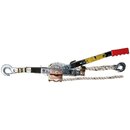Does anyone know how to work out this problem?
An object with a volume of one cu. ft., weighing 150 lbs. is embedded in the sediment at a depth of 99 ft. in the ocean harbor. This object is best lifted to the surface by:
1) a line tied to a boat at the surface
2) Two 75-lb. lift bags weighing five lbs. each
3) Three 50-lb. lift bags weighing four lbs. each
4) Three 1,000-lb. lift bags and two 50-lb. lift bags
Thanks!
An object with a volume of one cu. ft., weighing 150 lbs. is embedded in the sediment at a depth of 99 ft. in the ocean harbor. This object is best lifted to the surface by:
1) a line tied to a boat at the surface
2) Two 75-lb. lift bags weighing five lbs. each
3) Three 50-lb. lift bags weighing four lbs. each
4) Three 1,000-lb. lift bags and two 50-lb. lift bags
Thanks!






